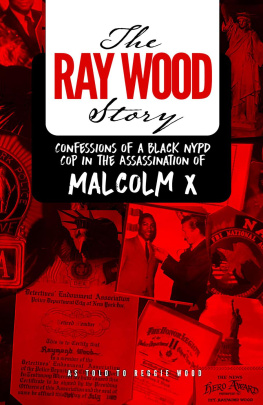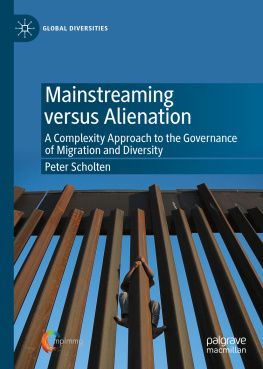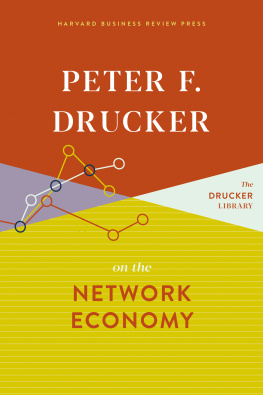2019 by Peter W. Wood
All rights reserved. No part of this publication may be reproduced, stored in a retrieval system, or transmitted, in any form or by any means, electronic, mechanical, photocopying, recording, or otherwise, without the prior written permission of Encounter Books, 900 Broadway, Suite 601, New York, New York 10003.
First American edition published in 2019 by Encounter Books, an activity of Encounter for Culture and Education, Inc., a nonprofit, tax-exempt corporation.
Encounter Books website address: www.encounterbooks.com
Manufactured in the United States and printed on acid-free paper. The paper used in this publication meets the minimum requirements of ANSI/NISO Z39.481992 (R 1997) (Permanence of Paper).
FIRST AMERICAN EDITION
LIBRARY OF CONGRESS
CATALOGING-IN-PUBLICATION DATA IS AVAILABLE
I F I WERE TO WRITE another long book on diversity, I would take as my model Alexis de Tocquevilles Democracy in America and title it Diversity in America. And I would set out to capture the transformation of a republic founded on the ideals of freedom and equality into a regime scared into submission by the fear of being called a racist. This all-purpose term of opprobrium is diversitys way of silencing dissent and forcing its way ahead wherever its leaders choose to take it.
But this isnt that book. Instead, it is my commentary on what has happened since 2003, when I authored Diversity: The Invention of a Concept.
Diversity is the grown child still living at home. He is old enough by now to move out, but he just hasnt gotten around to it. Moreover, the United States Supreme Court ruled in 2003 that he could stay another twenty-five years. Lets see: that would be June 2028, when hell be exactly fifty years old. I suspect at that point he will want to stay put.
He will be fifty because the diversity doctrine as we have come to know it was born at the Supreme Court in June 1978. Thats when the Court handed down its decision in the case of Bakke vs. The University of California, and Justice Lewis Powell freelanced an opinion that put diversity on the map. Powell said that the Medical School at the University of California Davis had no business offering racial preferences to some applicants in an effort to right historical injustices. But if the University had justified its racial preferences as a way to achieve the educational benefits of diversity, Powell, for one, might have reached a different conclusion.
No other Justice agreed with Powell on this point, and his opinion could easily have rolled off the table like a loose marble to be swept away when the cleaners arrived. But as it happened, colleges and universities were looking for a new way to justify the use of race in college admissions. They feared the Supreme Court would go beyond Bakke and rule all racial preferences unconstitutional.
That put the concept of diversity into play in American higher education. By the early 1980s, campus offices of affirmative action were rapidly being renamed diversity offices. Moreover, Powells awkwardly written opinion gave way to a more expansive version of the idea. The opinion, after all, stereotyped members of minority groups as walking billboards for the views he imagined were characteristic of those groups. Black students were supposed to show up enunciating black viewpoints for the edification of nonblack students. Powell explicitly justified favoritism toward black students as a way to enhance the educational experience of white students. He rejected entirely the idea that such favoritism could be founded on anything else, such as compensating minority students for historic grievances or overcoming a history of racial discrimination.
Powells reasoning and his rhetoric were of limited use to the evangelists of diversity, but they swooned over the basic concept: a simple, memorable word that could stand for all sorts of things besides racial preferences in admissions. Diversity, for example, could also mean respect for the worlds many cultures and revamping the curriculum in that light; hiring faculty members who look like the students; and even segregating students into racial groups the better to serve their supposed group needs.
By the mid-eighties, diversity was the hottest idea in American education, and it was poised for breakout into the culture at large. In 1987, a misread report from the Hudson Institute stampeded corporate America towards the diversity cliff. The report seemed to say that by the turn of the century, standard-issue white workers would be a rapidly dwindling minority. The future belonged to those companies that got with the diversity program immediately. Overnight a new profession of diversity consultants was born.
If you have read Diversity: The Invention of a Concept, you have already enjoyed the scenic tour of what happened during those years. The book left off on the eve of the Supreme Courts decision in another race-preferences-incollege-admissions case, Grutter v. Bollinger. I dared hope at the end of the book that the Court would ring down the curtain on twenty-five years of Powell-inspired diversity folly. Justice Sandra Day OConnor, however, disappointed me. She not only promised another twenty-five years of diversity folly, but she also gave the concept something that Powell had been unable to do: the kiss of legitimacy of a majority Supreme Court decision.
LIBERTY, EQUALITY, DIVERSITY
OConnors opinion has been ably dissected by many others, including four of her own colleagues on the Court. As with Powells opinion in Bakke, however, the significance of OConnors validation of the diversity end-run on the Equal Protection clause of the Fourteenth Amendment far exceeds its particular legal applications. Grutter permits colleges and universities to apply racial preferences in student admissions provided they dress the preferences in suitable camouflage as the pursuit of diversity. But Grutter also gave ferocious new power to what we now call identity politics.
Diversity before Grutter was a creed ardently promoted by campus activists and increasingly taken to heart by college administrators. It was also a catchy idea that had been taken up without any serious reflection in many domains of American culture. Business, entertainment, sports, churches, and consumers were all attracted to aspects of the diversity doctrine. But diversity was still something new and a little unfamiliar.
Americans understand that our nation was founded on the principles of liberty and equality. Americans also understand that liberty and equality sometimes conflict. Perfect liberty seldom produces perfect equality. Some use their liberty to get rich. Some use their insistence on equality in a manner that cuts against others liberties. Americans have long struggled to find the best ways to accommodate both ideals. Diversity, however, is something different: a third thing that in crucial ways undermines both liberty and equality.














